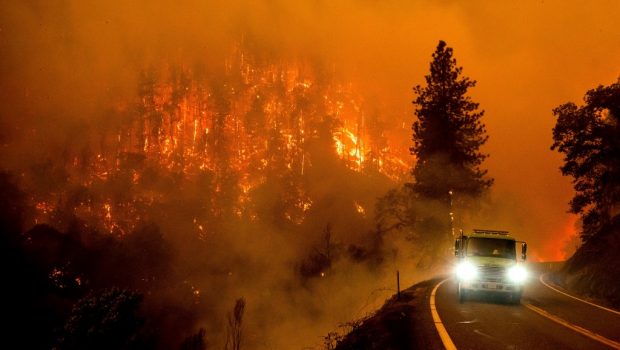Fight 21st-century wildfires with 21st-century technology
The western United States is in the thick of wildfire season. In California this summer, the Oak Fire near Yosemite National Park burned more than 19,000 acres. To the north, the McKinney Fire burned more than 55,000 acres in just one weekend, making it the Golden State’s largest blaze of the year. The Mosquito Fire in the foothills east of Sacramento had grown to 30,000 acres by Friday morning.
In the past decade, California has experienced nine of its 10 largest wildfires on record. It’s not alone. In Alaska, a record-breaking fire season has razed an area the size of Connecticut. Across the United States, wildfires have already burned about 9,000 square miles since the beginning of 2022 after last year consuming more than 11,000 square miles, an area larger than Massachusetts. Wildfires in Europe are also shattering records.
Climate change is exacerbating heatwaves and droughts, contributing to these extreme blazes. The 2020 fire season destroyed nearly 18,000 structures in the United States, over half of them residences. In 2018, wildfires caused $148 billion in economic losses in California alone.
We need to fight fires with the best tools available in order to prevent loss of life and massive economic damage. Unfortunately, firefighters don’t always have those tools, often for budgetary reasons.
In firefighting, situational awareness is essential — real-time information on where a fire is located, how fast it’s moving and growing, and weather conditions that could affect it. Yet even today, many departments only have paper notes and maps and radios for communication.
Until recently, even fire crews with access to airplanes to conduct mapping had to land before they could upload their data. By the time their colleagues got the information, conditions on the ground had often changed.
Thankfully, firefighting technology has improved greatly in recent years. For example, first responders can now use planes outfitted with infrared sensors to determine the precise locations of even the most nascent fires. And departments are acquiring planes from which they can instantly transmit data to firefighters on the ground, sending information directly to cell phones.
Others have applied the power of artificial intelligence to take some of the guesswork out of firefighting. Lockheed Martin and Nvidia partnered to create digital simulations based on data like an area’s vegetation, topography and wind patterns to predict where a fire will spread and how quickly.
AI company Remark Holdings has developed a monitor robot roughly the size of a compact car that uses computer vision to detect wildfire indicators such as high temperature, smoke or flames and can instantly relay that information, without a person having to be present in the danger zone.
Firefighters are also starting to use drones to stay safe while they fight blazes. These devices offer a bird’s-eye view of a fire, which helps those on the ground predict where it will spread next. That information helps crews maximize the effectiveness of their often-limited resources.
And Qwake Technologies is developing an augmented-reality helmet to help firefighters stay oriented in low-visibility conditions.
As technologies like these become available, uptake has been uneven. California recently committed $30 million to acquire airplanes with state-of-the-art sensor and communication technology for fighting wildfires. But other states and regions haven’t been — or feel they can’t be — so forward-looking.
We are now in a vicious circle: Greenhouse gas emissions contribute to extreme fire behavior, but wildfires themselves also release tons of greenhouse gases into the atmosphere, further worsening the effects of climate change. California’s 2020 fire season produced a record 112 million tons of climate-warming gases. That same year in Oregon, greenhouse gas emissions from wildfires eclipsed the total annual emissions that typically come from the state’s power plants.
We can only break out of this cycle by investing consistently in the best tools for the job.
Alan Bigelow, who lives in southern Nevada, is a firefighter with 18 years of experience.








Gloss